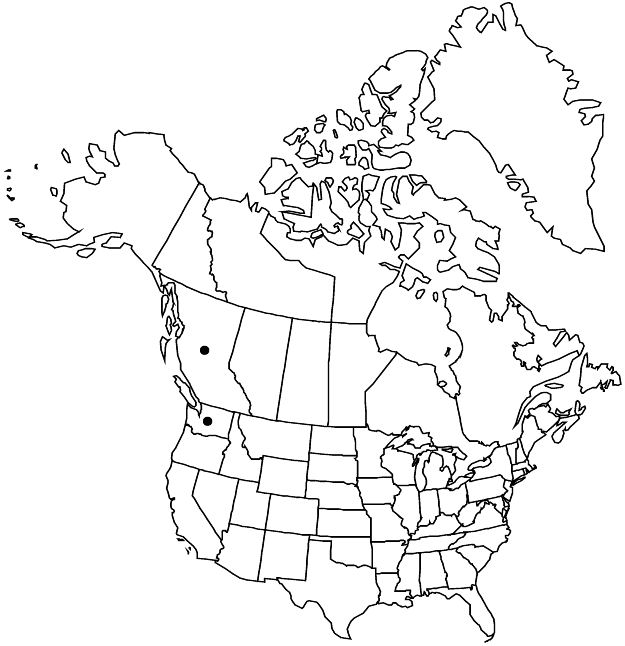Difference between revisions of "Cotoneaster salicifolius"
Nouv. Arch. Mus. Hist. Nat., sér. 2, 8: 225. 1885.
FNA>Volume Importer |
FNA>Volume Importer |
||
| Line 28: | Line 28: | ||
|elevation=0–200 m | |elevation=0–200 m | ||
|distribution=B.C.;Wash.;Asia (China: Sichuan;Xizang);introduced also in Europe. | |distribution=B.C.;Wash.;Asia (China: Sichuan;Xizang);introduced also in Europe. | ||
| − | |discussion=<p>L. Lingdi and A. R. Brach (2003) included as varieties of Cotoneaster salicifolius several taxa that here are considered full species, such as C. henryanus (C. K. Schneider) Rehder & E. H. Wilson, C. hylmoei Flinck & J. Fryer, and C. rugosus E. Pritzel.</p><!-- | + | |discussion=<p>L. Lingdi and A. R. Brach (2003) included as varieties of <i>Cotoneaster salicifolius</i> several taxa that here are considered full species, such as C. henryanus (C. K. Schneider) Rehder & E. H. Wilson, C. hylmoei Flinck & J. Fryer, and C. rugosus E. Pritzel.</p><!-- |
| − | --><p>A horticultural hybrid, presumably between Cotoneaster dammeri and C. salicifolius, is known in gardens as the cultivar Cotoneaster 'Hybridus Pendulus' and was recently collected as a local escape from cultivation in King County, Washington. This hybrid would key to C. x\suecicus but differs in its limp branching, much larger leaves (20–80 × 10–30 mm) and more numerous and smaller diameter flowers (9–11 mm wide). The foliage of the hybrid closely resembles C. salicifolius, but it has fewer (4–13) and larger flowers and is less than 1 m in height.</p> | + | --><p>A horticultural hybrid, presumably between <i>Cotoneaster dammeri</i> and <i>C. salicifolius</i>, is known in gardens as the cultivar <i>Cotoneaster</i> 'Hybridus Pendulus' and was recently collected as a local escape from cultivation in King County, Washington. This hybrid would key to C. x\suecicus but differs in its limp branching, much larger leaves (20–80 × 10–30 mm) and more numerous and smaller diameter flowers (9–11 mm wide). The foliage of the hybrid closely resembles <i>C. salicifolius</i>, but it has fewer (4–13) and larger flowers and is less than 1 m in height.</p> |
|tables= | |tables= | ||
|references= | |references= | ||
| Line 54: | Line 54: | ||
|publication year=1885 | |publication year=1885 | ||
|special status=Introduced | |special status=Introduced | ||
| − | |source xml=https://jpend@bitbucket.org/aafc-mbb/fna-data-curation.git/src/ | + | |source xml=https://jpend@bitbucket.org/aafc-mbb/fna-data-curation.git/src/8f726806613d60c220dc4493de13607dd3150896/coarse_grained_fna_xml/V9/V9_757.xml |
|subfamily=Rosaceae subfam. Amygdaloideae | |subfamily=Rosaceae subfam. Amygdaloideae | ||
|tribe=Rosaceae tribe Gillenieae | |tribe=Rosaceae tribe Gillenieae | ||
Revision as of 18:19, 18 September 2019
Shrubs or trees, 1–8 m. Stems erect or arching [prostrate]; branches spiraled or distichous, arching, maroon, slender, initially tomentose-strigose. Leaves persistent; petiole 3–8 mm, tomentose-strigose; blade narrowly elliptic to elliptic-lanceolate, 30–90 × 8–23 mm, coriaceous, base cuneate, margins strongly revolute, veins 7–12, deeply sunken, apex gradually tapered, acute or acuminate, abaxial surfaces grayish green, initially densely villous, becoming glabrous or glabrate, adaxial dark green, shiny, not glaucous, bulging between lateral veins, sparsely pilose initially. Inflorescences on fertile shoots 20–60 mm with 3 or 4 leaves, 10–50-flowered, compact. Pedicels 0.5–3(–4 mm), densely strigose-villous. Flowers (5–)6–9 mm diam.; buds white; hypanthium funnelform, pilose; sepals: margins sparsely villous, apex acute, surfaces sparsely pilose; petals spreading, white, glabrous; stamens 20, filaments white, anthers red-purple; styles 2 or 3(or 4). Pomes bright red (or with hint of crimson), broadly obovoid to globose, (5–)6–8.5 x (5–)6–8 mm, shiny, not glaucous, sparsely pilose; sepals depressed or flat, sparsely pilose; navel slightly open; style remnants at apex. Pyrenes 2 or 3(or 4). 2n = 34 (Germany).
Phenology: Flowering May–Jun; fruiting Oct–Apr.
Habitat: Thickets, mossy cliffs, cracks in walls, lakeshores, urban waste ground
Elevation: 0–200 m
Distribution

B.C., Wash., Asia (China: Sichuan, Xizang), introduced also in Europe.
Discussion
L. Lingdi and A. R. Brach (2003) included as varieties of Cotoneaster salicifolius several taxa that here are considered full species, such as C. henryanus (C. K. Schneider) Rehder & E. H. Wilson, C. hylmoei Flinck & J. Fryer, and C. rugosus E. Pritzel.
A horticultural hybrid, presumably between Cotoneaster dammeri and C. salicifolius, is known in gardens as the cultivar Cotoneaster 'Hybridus Pendulus' and was recently collected as a local escape from cultivation in King County, Washington. This hybrid would key to C. x\suecicus but differs in its limp branching, much larger leaves (20–80 × 10–30 mm) and more numerous and smaller diameter flowers (9–11 mm wide). The foliage of the hybrid closely resembles C. salicifolius, but it has fewer (4–13) and larger flowers and is less than 1 m in height.
Selected References
None.